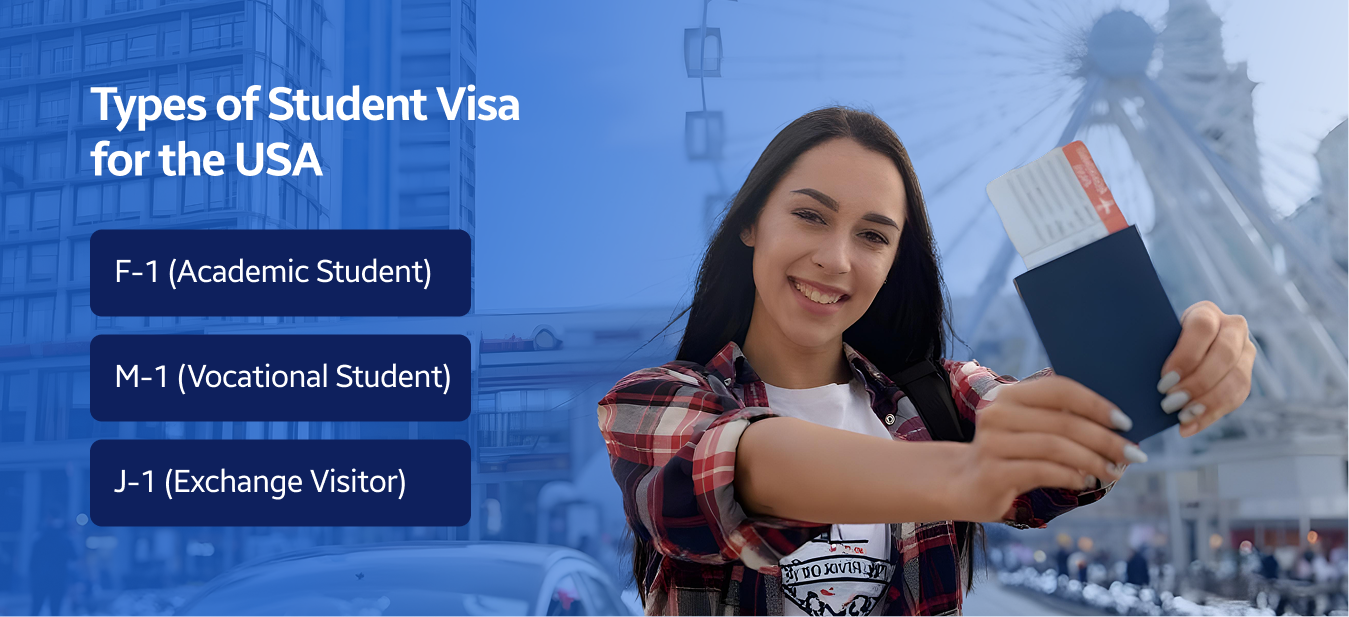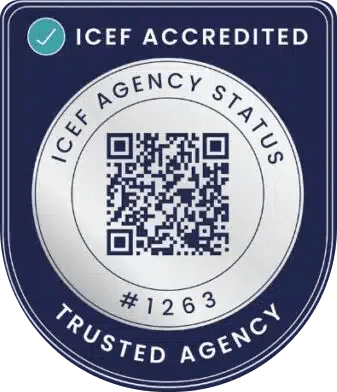 Shiva Krishna
Shiva Krishna

The US has always been the most popular place for overseas students to go, and Indians are one of the largest groups. According to the US Department of State, more than 268,923 Indian students were enrolled in US universities in 2023-24, a figure that is increasing year after year. For Indian students, getting a degree in America provides access to premier universities, advanced research, and unrivaled employment chances.
This guide includes everything you need to know about studying abroad, from eligibility requirements and required documentation to processing schedules and prices and serves as a clear road map for students.
The three principal categories used by overseas students are F-1, M-1, and J-1. Each serves a specific purpose and has different rules.
F-1 (Academic Student): This visa is intended for students pursuing full-time academic study at accredited colleges, universities, secondary schools, language training programs, or other recognized educational institutions. F-1 students must maintain full-time enrollment and demonstrate proper financial support for the duration of their studies.
M-1 (Vocational Student): The M-1 visa is for people who are participating in full-time vocational or technical programs, like trade schools or other types of specialized training. Students on M-1 visas have fewer practical training options than F-1 students.
J-1 (Exchange Visitor): The J-1 visa is meant for participants in sponsored exchange programs, including certain short-term academic programs, internships, or cultural exchange opportunities. J-1 regulations vary, particularly regarding work permissions and the role of the program sponsor in supporting the student.
When you apply for a visa, it's very important to choose the right category. Consular officers first verify the visa type, which is an important stage in the approval procedure. If you choose the wrong category, you could have to wait longer, provide more documents, or even get your visa denied.

Basic eligibility is straightforward, but details matter.
Secure admission to a U.S. school authorized to issue the required documents: Form I-20 for F/M visas or Form DS-2019 for J visas.
Demonstrate adequate funds to cover tuition and living expenses for at least the first year, using bank statements, scholarship letters, sponsor affidavits, or approved loans as proof.
Show genuine intent to return to your home country after completing your studies, unless eligible for a later change of status.
Meet all academic and program-specific requirements set by the school, including any English language proficiency standards such as TOEFL or IELTS scores.
Following these basic rules closely makes your visa application stronger and makes sure you follow U.S. immigration laws.
This is the standard usa student visa process. Follow each item precisely.
Obtain Admission to a SEVP-Certified School: Apply to and secure admission at a USA school certified by the Student and Exchange Visitor Program. Once accepted, the school will issue your Form I-20 for F/M visas or Form DS-2019 for J visas.
Pay the SEVIS I-901 Fee: Submit the SEVIS I-901 fee online and retain the receipt. This fee is mandatory, and proof of payment is required during the visa application and interview process.
Complete the DS-160 Visa Application: Fill out the DS-160 non-immigrant visa application form online. Ensure all information is accurate, then print the confirmation page to bring to your interview.
Pay the Visa Application (MRV) Fee: Pay the required visa application fee, also known as the MRV fee. Some applicants may have additional fees depending on nationality or reciprocity agreements.
Schedule the Embassy or Consulate Appointment: Book an appointment at the nearest U.S. Embassy or Consulate for your visa interview. Confirm the date and time, and plan to arrive early.
Prepare Required Documents: Gather all necessary documents, including your passport, Form I-20 or DS-2019, DS-160 confirmation, SEVIS receipt, admission letter, proof of financial support, academic transcripts, passport-sized photographs, and documents showing ties to your home country.
Attend the Visa Interview: Appear at your scheduled interview and answer all questions clearly, truthfully, and confidently. The consular officer will evaluate your eligibility based on your documentation and intent to study in the U.S.
Receive Visa Decision: If approved, your visa will be stamped on your passport. If denied, the officer will give the reason and outline possible next steps, including options for reapplication.
Organize these in a single folder. Consular officers prefer neatness.
Passport valid for at least 6 months beyond the intended entry date.
Form I-20 (F/M) or DS-2019 (J).
DS-160 confirmation page and MRV fee payment receipt.
SEVIS I-901 fee payment receipt.
University admission letter and course details.
Statement of Purpose (SOP for USA Student Visa)
Financial evidence covering tuition and living costs.
Academic transcripts, test scores, and diploma.
Passport photos meeting the embassy specs.
Any scholarship letters, sponsor letters, or loan documents.
Ties to the home country documents when relevant, such as property titles or employment letters.

New students can apply up to 365 days before the start date listed in the I-20. You may enter the U.S. up to 30 days before the program start date. Interview wait times and processing vary by embassy, season, and local circumstances. Check the Visa Appointment Wait Times tool for current estimates. Typical total time from submission to stamped visa ranges from a few weeks to several months in busy seasons. Plan accordingly and allow extra time if you need additional documentation or administrative processing.
Fees may change. Confirm with the U.S. embassy in your country before payment. Current typical fees are:
|
Fee Type |
Typical Amount (INR) |
Notes |
|
Nonimmigrant visa application processing fee (MRV) |
INR ~16,436 |
Applies to most non-petition visas including F and M. Confirm the rate on the State Department fees page. |
|
I-901 SEVIS fee |
INR ~31,066 |
Paid to FMJFee for F and M applicants. Save the receipt. |
|
Visa Integrity Fee (new) |
INR ~22,190 |
The U.S. announced a new one-time integrity fee for nonimmigrant applicants effective Oct 1, 2025. Check the latest official guidance and local embassy notices. |
|
Other reciprocity or service charges |
Varies by country |
Some countries add additional fees. |
Practical Tips and Common Pitfalls
Pay the SEVIS fee only at the official site and keep the receipt.
Complete the DS-160 carefully. Mismatched names or dates cause delays.
Carry clear evidence of funds and the original I-20 or DS-2019 on interview day.
Do not schedule travel until you have the stamped visa.
Prepare short, honest answers for the interview. Avoid over-explaining.
If you hold a scholarship or a sponsor letter, show original documents.

Getting a U.S. student visa is one of the most crucial things you need to do before you can study abroad. Understanding the various types of U.S. student visas, the complete visa procedure, requirements, and costs will allow you to prepare your application with clarity and confidence. Preparing documents ahead of time, keeping track of deadlines, and adhering to government requirements all help reduce the possibility of delays. With proper preparation, you can focus on your academics, campus life, and job opportunities (Chancekarte & others) rather than paperwork.
You can get in touch with Career Gyan for personalized guidance, including document reviews, student loan assistance, and interview preparation. Our team supports students at every stage, ensuring a seamless journey from application to arrival in the U.S.
Pursuing higher education in Medical and STEM (Science, Technology, Engineering, and Mathematics) fields opens doors.
Membership


Accreditation

Countries
2025 © All rights reserved by careergyan.co